Emotheo: Very First Imotski Heritage Hotel to Open in December
September the 22nd, 2022 - The very first Imotski heritage hotel is set to open its doors at the end of December this year, on the site of a former inn just 50 metres from the famous Blue Lake (Modro jezero).
As Poslovni Dnevnik/Marija Crnjak writes, Hotel Emotheo, the very first boutique Imotski heritage hotel, will open in the very centre of Imotski, and it is project in which local entrepreneurs, the company J.P. Immobilien, have been heavily involved.
The investor comes from the construction and real estate business, and after participating in the development and construction of a number of hotel projects, four years ago they decided to open their own hotel, in their hometown, to which they wanted to pay respect. They also wanted to stay in line with and respect Imotski's cultural heritage that, in addition to modern approach, will be the main basis of design and service at Emotheo.
The very first Imotski heritage hotel will boast twenty beautiful designed rooms and two suites, a bar and a restaurant, and the plan is to be open all year round and attract guests with higher paying power from all over the world, but also to be a ''living room'' of sorts for the local population and a place to host gatherings and smaller events.
"Four years ago, we decided to buy the derelict building which stands here, where 100 years ago there was a lodging house with an inn, we hired experts to come in and help us develop the story and get things started. The purchase took time because there were several owners involved, we spent a year clearing the land, which is in a demanding zone, the conservators also had work to do, and now we're bringing those works to an end, and interiors are being arranged in order to have a soft opening sometime before Christmas.
The first goal was to reach three stars in terms of categorisation, but in cooperation with consultant Zoran Pejovic, we decided to raise the bar to four stars and develop a middle scale product that we'll then direct towards the upscale segment, primarily through the gastronomic offer and personalisation,'' explained Davor Pojatina, the co-founder of J.P. Immobilien.
Natural materials were used in the building itself and the facility was designed by Ante Niksa Bilic, who also hails from Imotski, and the hotel director Domagoj Nikolic is also from there, who is otherwise a tourism expert with extensive experience here in Croatia and abroad. He will come to Emotheo from his position as a lecturer at the American college RIT (Rochester Institute of Technology) down in Dubrovnik. Along with numerous interests in the tourism sector, Nikolic's passion is history and storytelling, which is why he was the right choice for the first Imotski heritage hotel, according to the investors.
The development of the wine-food concept will be headed by young award-winning chef Roko Nikolic, also from Imotski, who is moving there from Rovinj's Blu restaurant. After studying at the prestigious Italian Gastro Academy Alma near Parma, he started his hotel career at the Hilton Imperial Hotel in Dubrovnik.
The ultimate gastronomic experience will be the focus of this hotel, and it will combine the complex heritage of the wider region with the reinterpretation of traditional Dalmatian cuisine. This will be accompanied by a bar offering everything from local and international liquors and wines to signature cocktails, all in line with the story and concept.
A combination of tradition and technology
"Our guests will experience our authentic culture, but also feel the influence of all other cultures and influences that have merged there, and this is a story that will permeate all parts of the hotel. Our focus will primarily be placed on providing very good service and the presentation of a combination of tradition, knowledge and technology, and our plan is to attract guests who are looking for a unique product like this either through personalised tours or on an individual basis.
We're planning to cooperate with leading DMCs (destination management companies) that address the "upscale" audience, as well as with large booking agencies that also have these experiential offers. We also plan to introduce ourselves to people from here and the local population, honour them and invite them to come and hang out with us," stated Domagoj Nikolic.
Both the management and the investor point out that this is not exclusively a business investment, but rather an emotional dedication to their home.
For more, make sure to check out our dedicated business section.
Ancient Wells of Rajčica Valley, Inland Dalmatia's Hidden Wonder
February 14th, 2022 - While most tourists tend to gravitate towards the coastline, there are many hidden gems to discover in inland Dalmatia. Meet the wells of Rajčica valley, a magical place that looks as if it came straight out of a fantasy novel
Less than an hour’s drive from Split, in the rugged karst landscape of the Klis hinterland, you’ll stumble upon an extraordinary site. Known as Rajčica, the valley near Nisko village is home to a cluster of 10 ancient wells.
And when we say ancient, it’s actually a bit hard to pinpoint the moment in time when the wells were built. They are commonly referred to as Roman wells, some believe they're from the Illyrian times, and it’s also said they date to late Middle ages, namely the 13th or 14th centuries.
Whatever the case, there’s a certain mystical quality to the picturesque site; it appears to be timeless. The wells are all alike in size and design; they’re closely spaced, each encircled by a dry stone wall and fitted with stone steps descending to the water surface.
Three of the ten wells are shrouded by greenery and have a lower water level, making them somewhat harder to spot. Since the site is located in a valley, heavy rain will often leave the area flooded; during summer droughts, the water level drops.
It’s unknown whether there are any underground rivers in the area, or if the wells are mainly getting water from precipitation. Nestled among the wells is a small pond where the cattle roaming the area often comes to drink.
The name of this wondrous site is another mystery that remains unsolved. Why Rajčica valley? The name literally translates to tomato in Croatian, but it’s believed to be more likely to refer to the place being a paradise in nature (raj = paradise, heaven). Finally, there are sources that claim the toponym originates from a family name that had a historical presence in the area (the valley of the Rajčić).
The wells of Rajčica used to be a seldom visited site, hidden away in a somewhat inaccessible location where one would have to fight their way through the thicket to get to the untouched clearing.
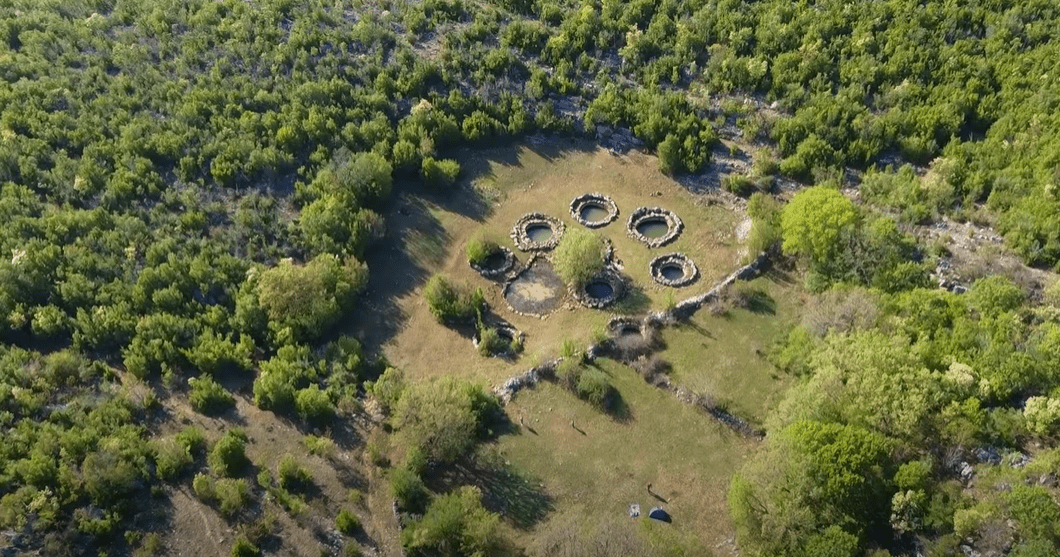
Rajcica valley / YouTube screenshot
These days, it’s more visitor-friendly. Backed by EU funding, Klis Municipality first had a forest road restored that connected the nearby villages of Brštanovo, Nisko and Matase, and which also doubles as an access road to Rajčica valley.
In a more recent part of the project, they had a picnic site built near the ancient wells. As of late 2021, there are seating areas, a grill, and even a balota rink as a nod to one of Dalmatia’s favourite pastimes.
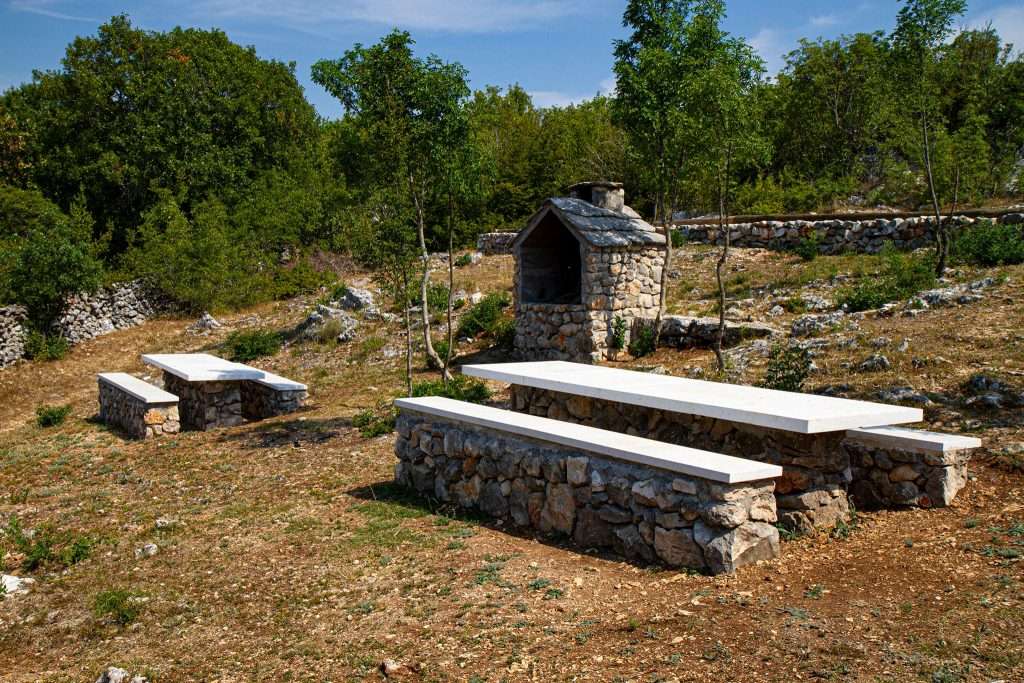 Picnic area / klis.hr
Picnic area / klis.hr
Rajčica valley gained in popularity since it was touched up a bit, especially as the pandemic drove more people to forgo urban destinations and spend time in nature instead. It’s not overcrowded yet, so if you happen to be looking for trip ideas, it just might be the perfect moment to visit the mystical wells before they become too popular among the locals and tourists alike.
Heavy Rain Fills 11 Imotski Lakes To Almost Record Highs
January 20, 2021 – Famous for its Red and Blue lakes, there are in fact 11 Imotski lakes located around the Dalmatian hinterland city. Due to high rainfall, their rising water levels are nearing the highest point in living memory
Inaccessible without advance preparation and experience, visitors to the Red Lake in Imotski can only admire the spectacle from the upper edges. The lake is referred to as 'red' because of the red clay colour of the rock face which surrounds the water below. There's a challenge traditionally tasked to those brought here – see if you can throw a stone from the brim into the water. It's harder than it looks. The walls are steep and wide, the water a good long way below. Except for now. Like the water in all 11 Imotski lakes, the water level is currently at the highest point is has been for as long as anyone can remember. The height of the water in the Red lake alone exceeds 309 meters.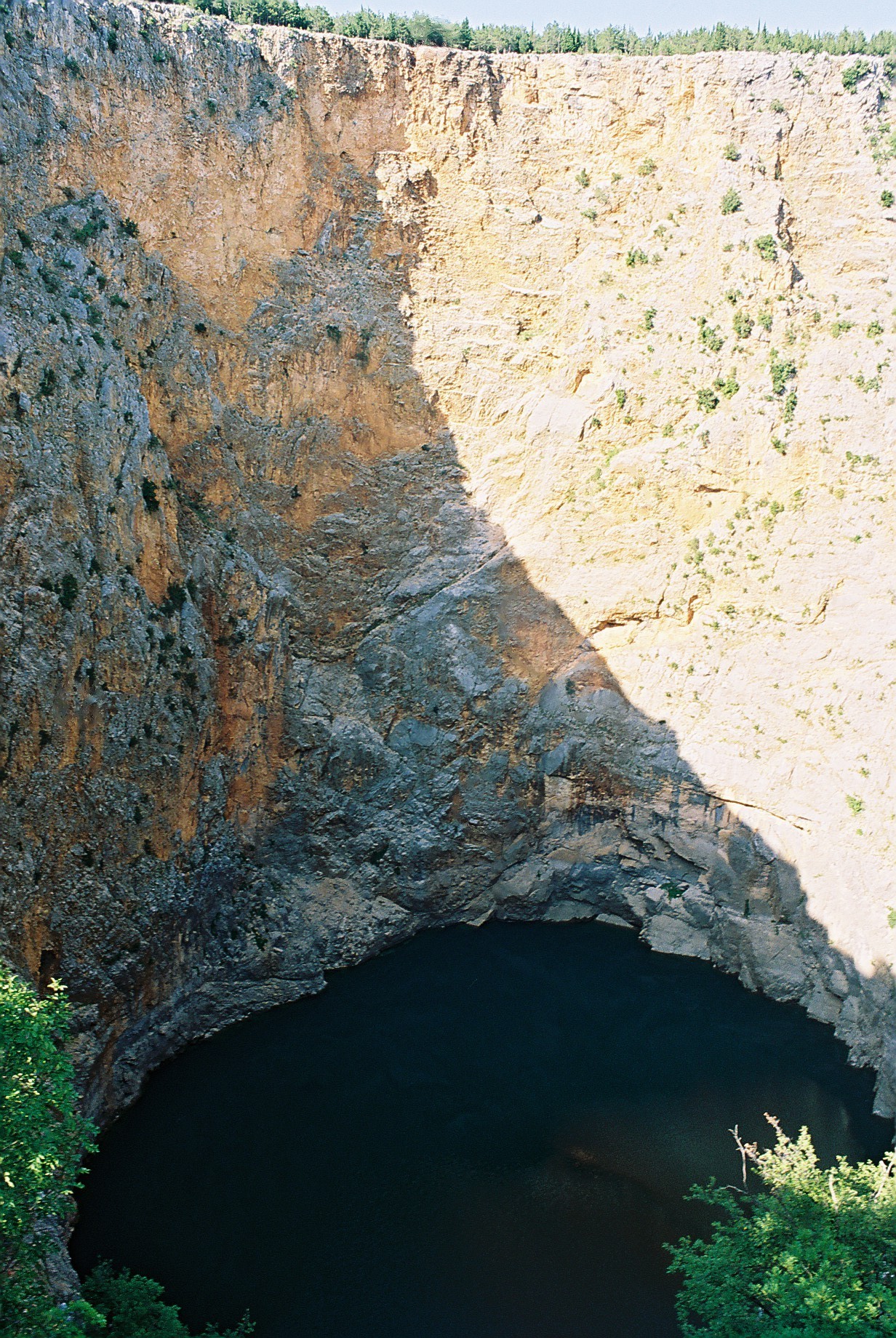 Imotski's Red Lake © Tieum512
Imotski's Red Lake © Tieum512
Heavy rainfall over recent months is the cause for the high and rising water levels in the 11 Imotski Lakes. In December 2020, about 700 litres of rain per square metre was recorded in the area, practically filling all 11 Imotski lakes, as well as the river Vrljika.
High water levels are recorded in Galipovac Lake, Lokvičićko Lake (or Mamić Lake), Prološki lake and the Knezović lake. The water level in the Vrljica River is still high. Along with the picturesque Green Lake, named after the beautiful, icy turquoise green appearance of its water, the 11 Imotski lakes are an appealing topography for hikers, walkers and climbers to explore. Accurate data on the height of the water in Imotski's Blue and Red Lakes was recorded within the past few days.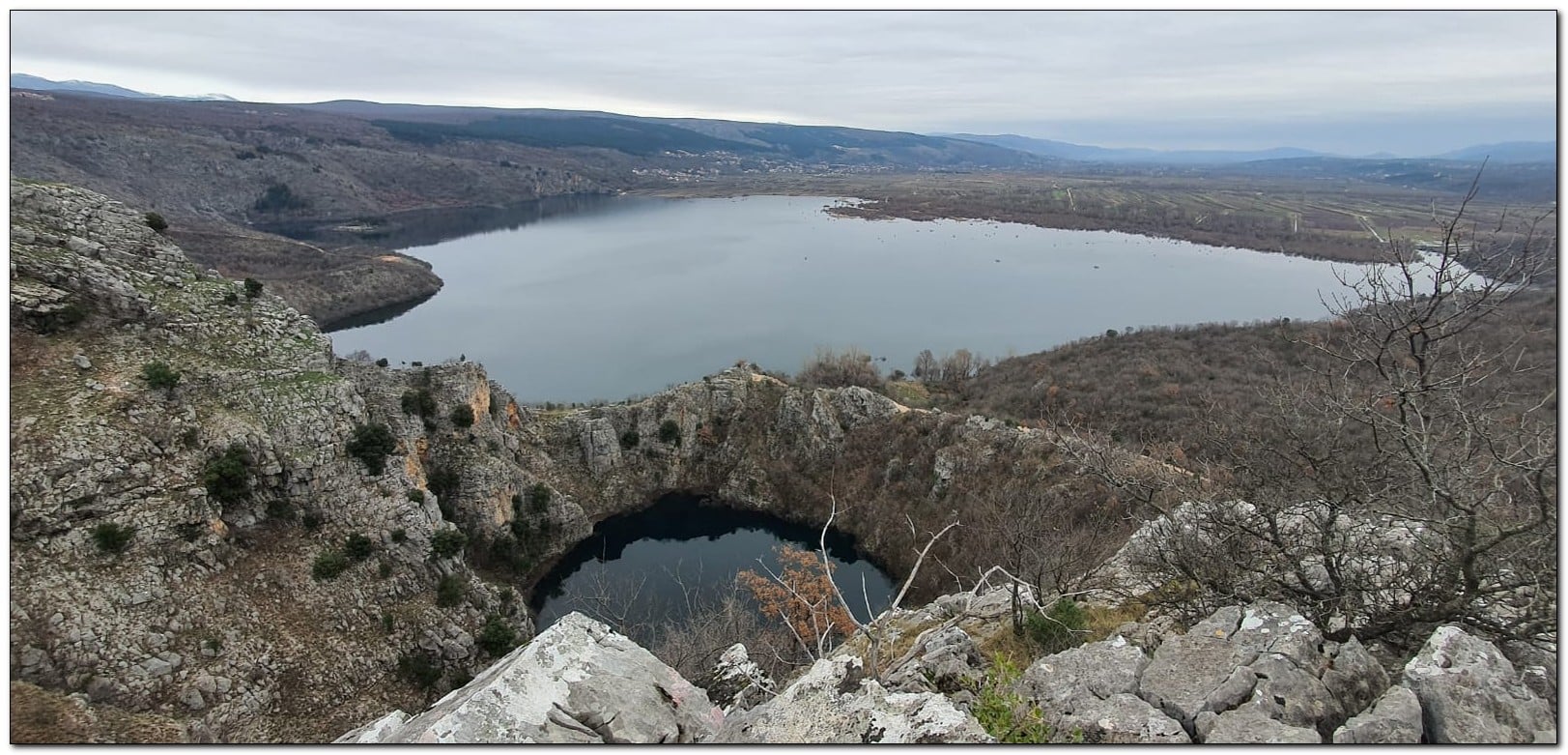 Photo of Lokvičićka jezera, one of the 11 Imotski lakes, taken by Josipa Rimac Vlajčić and a team from the Imotski Mountaineering Society during a mid-January expedition © HPD Imotski Facebook
Photo of Lokvičićka jezera, one of the 11 Imotski lakes, taken by Josipa Rimac Vlajčić and a team from the Imotski Mountaineering Society during a mid-January expedition © HPD Imotski Facebook
In the Blue lake – the one closest to Imotski centre and a popular summertime swimming and recreational site - the current water level is at 91.5 metres. It is still rising. Whether the water level will reach the record 102 metres recorded in 2012 will depend on rainfall within the region over coming days. Rains do not necessarily have to fall in Imotski to fill this or some of the other 11 Imotski lakes – they are fed by underground channels which flow from Bosnia.
Reporting on the rising water in Slobodna Dalmacija, local photographer and writer Braco Cosic informed that Imotski-based surveyor Ante Škeva had measured the current water level of Red Lake as a quite considerable 309 metres on Tuesday. If there was ever a time to take on the challenge of hitting its water surface with a stone, it is surely now.
PHOTOS: Extraordinary Plants of Klis Fortress Show Two Sides of Dalmatia
January 2, 2021 – High on the mountains, overlooking the city of Split, the historic settlement of Klis stands on the border between two distinct climate regions – the Mediterranean and the Dalmatian hinterland. The sometimes rare and extraordinary plants of Klis Fortress are characteristic of both. A new book details the flora you can find on both sides of the Dinaric Alps
The views from Klis are spectacular. The great city of Split lies below you, perched on the edge of the glistening Adriatic, beyond it, the islands of Čiovo, Šolta, Brac, Vis and Hvar. It's a view that has been admired for over 2000 years.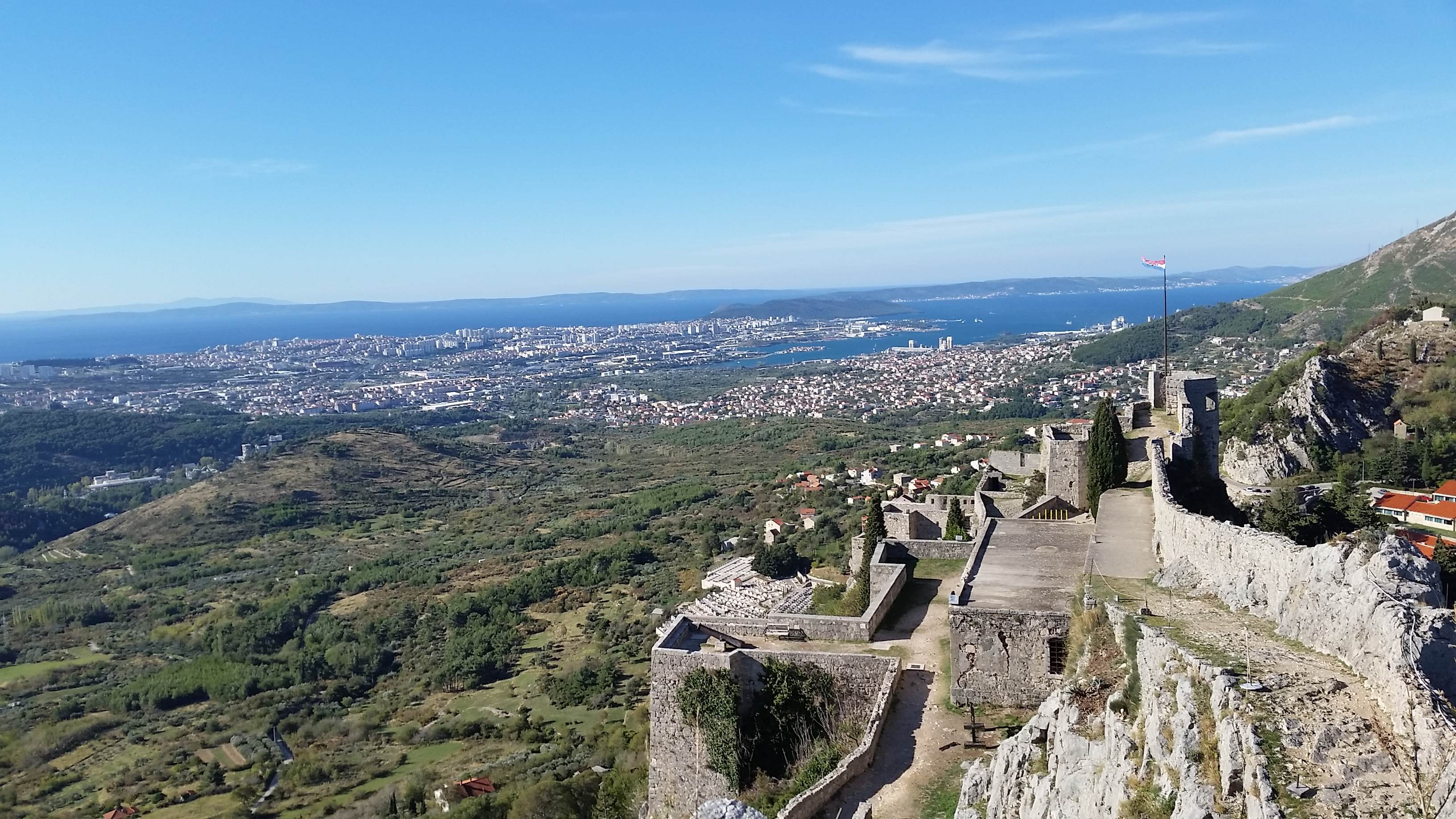 The view from Klis Fortress
The view from Klis Fortress
That's how long a fortress has stood here. Restructured and rebuilt several times over the millennia, within the walls of the impressive Klis Fortress lie much of the recent history of these lands – of the Illyrians and the Romans, the arrival of both Slavic people and of Christianity, the defence of Christian Europe from the Ottomans. So steeped in history are these walls, little wonder the fortress was chosen as a filming location for the popular Game Of Thrones series.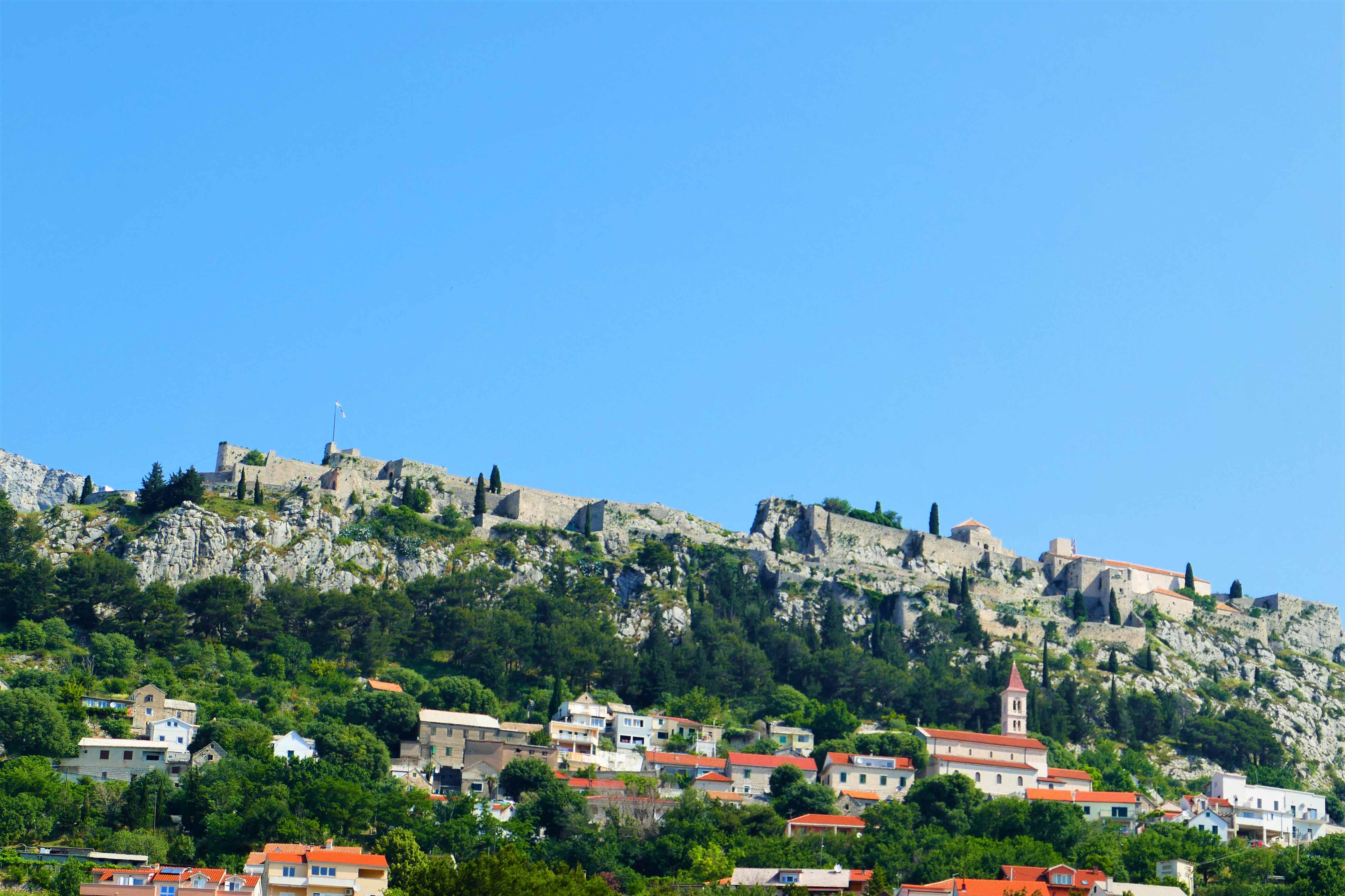 Klis Fortress
Klis Fortress
With its view so irresistibly inviting the eye, you could be forgiven for missing the plants of Klis Fortress. That's unfortunate. The fort straddles the top of the Dinaric Alps – one half existing within the sub-Mediterranean climate of the Dalmatian hinterland, the other on the distinctly warmer side of the Adriatic. This creates a unique environment for a wealth of flora. Not used as a fortress since the threat of Ottoman invasion subsided, these days the structure usually welcomes only tourists. The plants of Klis Fortress have reached into the grounds of the buildings, indeed into its very walls.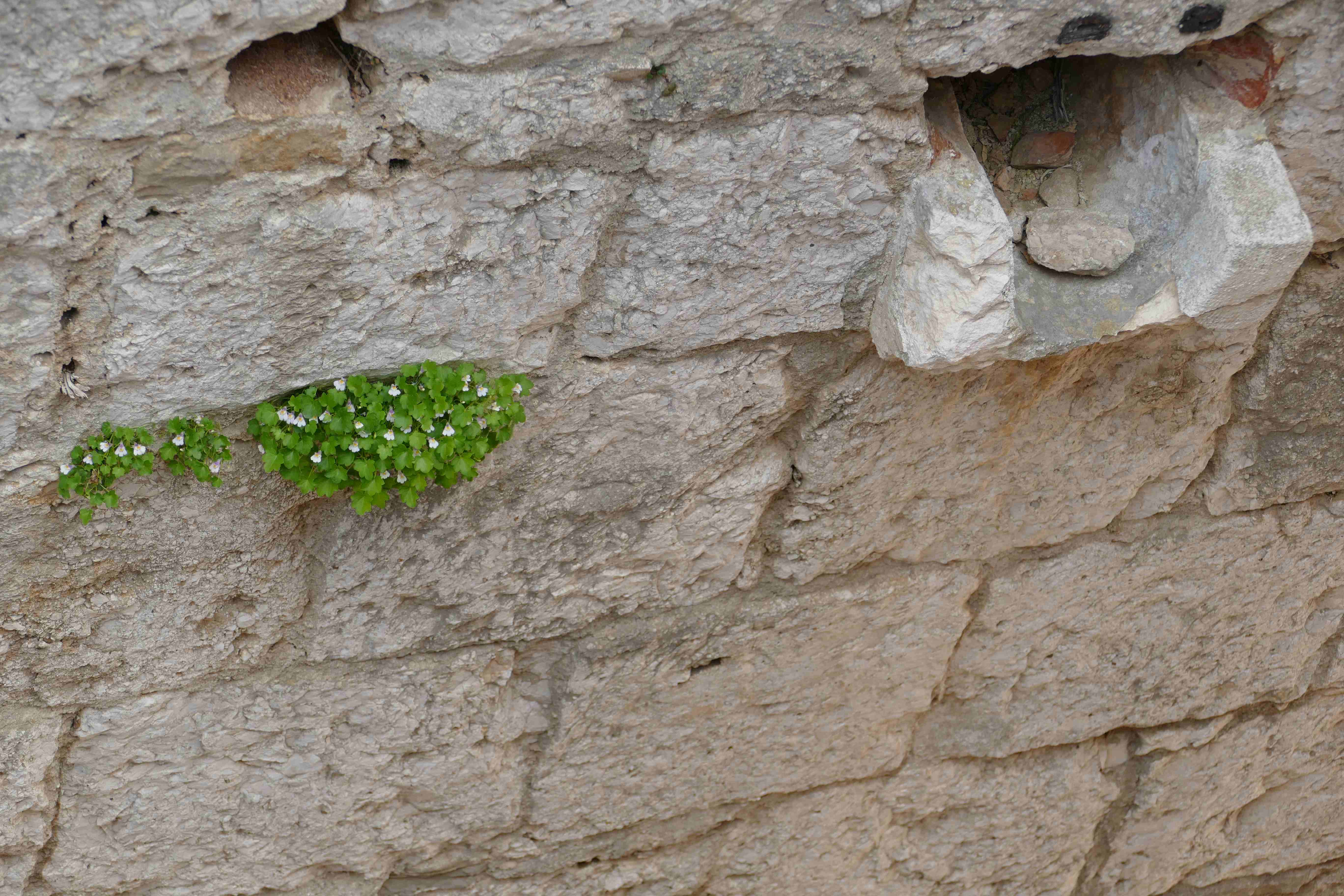 Cymbalaria muralis - Ivy Leaved Toadflax within the walls of Klis Fortress
Cymbalaria muralis - Ivy Leaved Toadflax within the walls of Klis Fortress
One person for who the plants of Klis Fortress did not go unnoticed is Ivan Limić. He lived in Klis all of his life, before leaving to get his degree, then a masters, at the Forestry department of the University of Zagreb. Today, he works for the Institute for Adriatic Crops and Karst Reclamation (IAC) on a PhD student's position. Having a specific interest in botany, he knows the plants of Klis Fortress better than most and after he met botanist Vedran Šegota of Herbarium Croaticum while in Zagreb, they decided they should work on a project together. After several years of work, that project - a book, 'Biljke Tvrdave Klis (Plants of Klis Fortress)' – has finally been released. Although helmed by co-authors Vedran and Ivan, it has actually been a project that involved a much greater group of contributors, not least the community of Klis and some of the best botanists in Croatia.
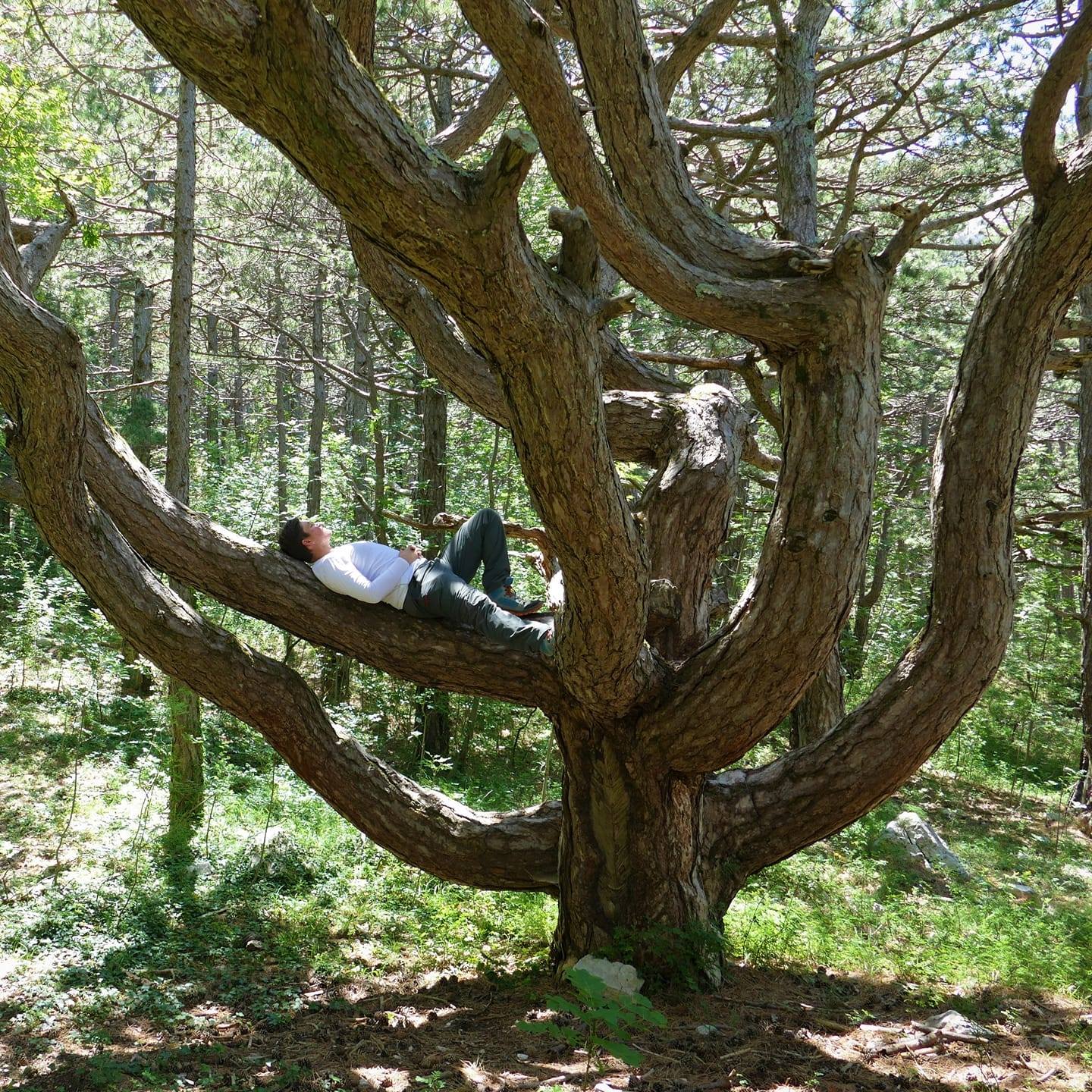
Ivan Limić, co-author of 'Plants of Klis Fortress', relaxing in a Black Pine
TCN talked with Ivan Limić to find out more about the book and about the plants of Klis Fortress
I first met Vedran when I started volunteering at Herbarium Croaticum Zagreb. I was in the city doing my degree. My main interests are forest silviculture and soil erosion, karst melioration, assessment of atmospheric deposition, study of flora, plant determination in Mediterranean region forest ecosystems and the effects of forest fires in those areas. We talked about doing a joint project because we shared similar interests. Vedran came to visit me in Klis and I wanted to show him around the fortress, but looking specifically at the flora. That's when we decided we should do a book about the plants of Klis Fortress.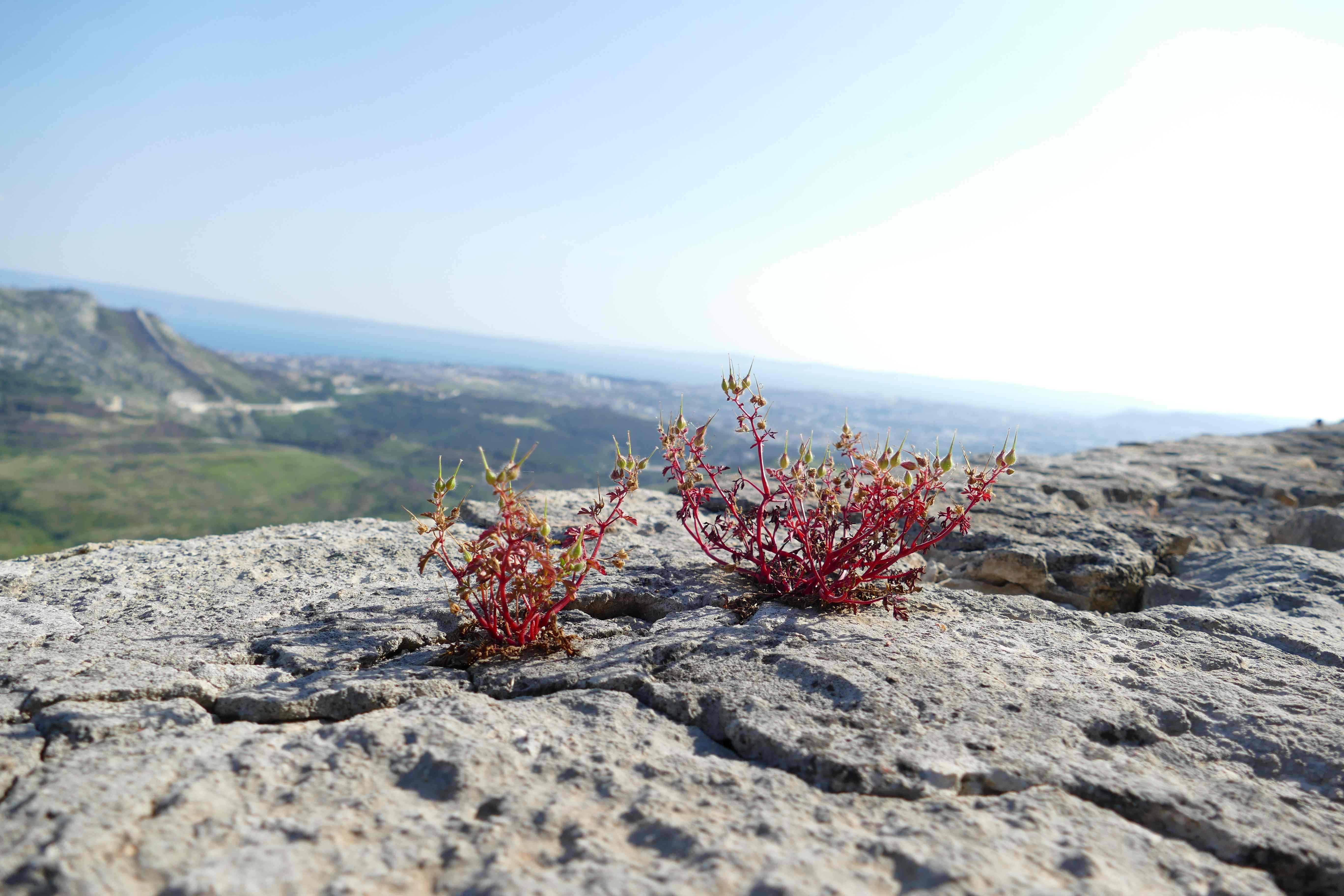 Geranium purpureum, the little-robin
Geranium purpureum, the little-robin
I walked around Klis Fortress all my life. When you live in a place, you not only acquire so much information about that place over the years, you also have an emotional connection to it. That's not something you can read in every book. Hopefully, with our book, we managed to get a sense of that emotional attachment across, so that you can really feel the place.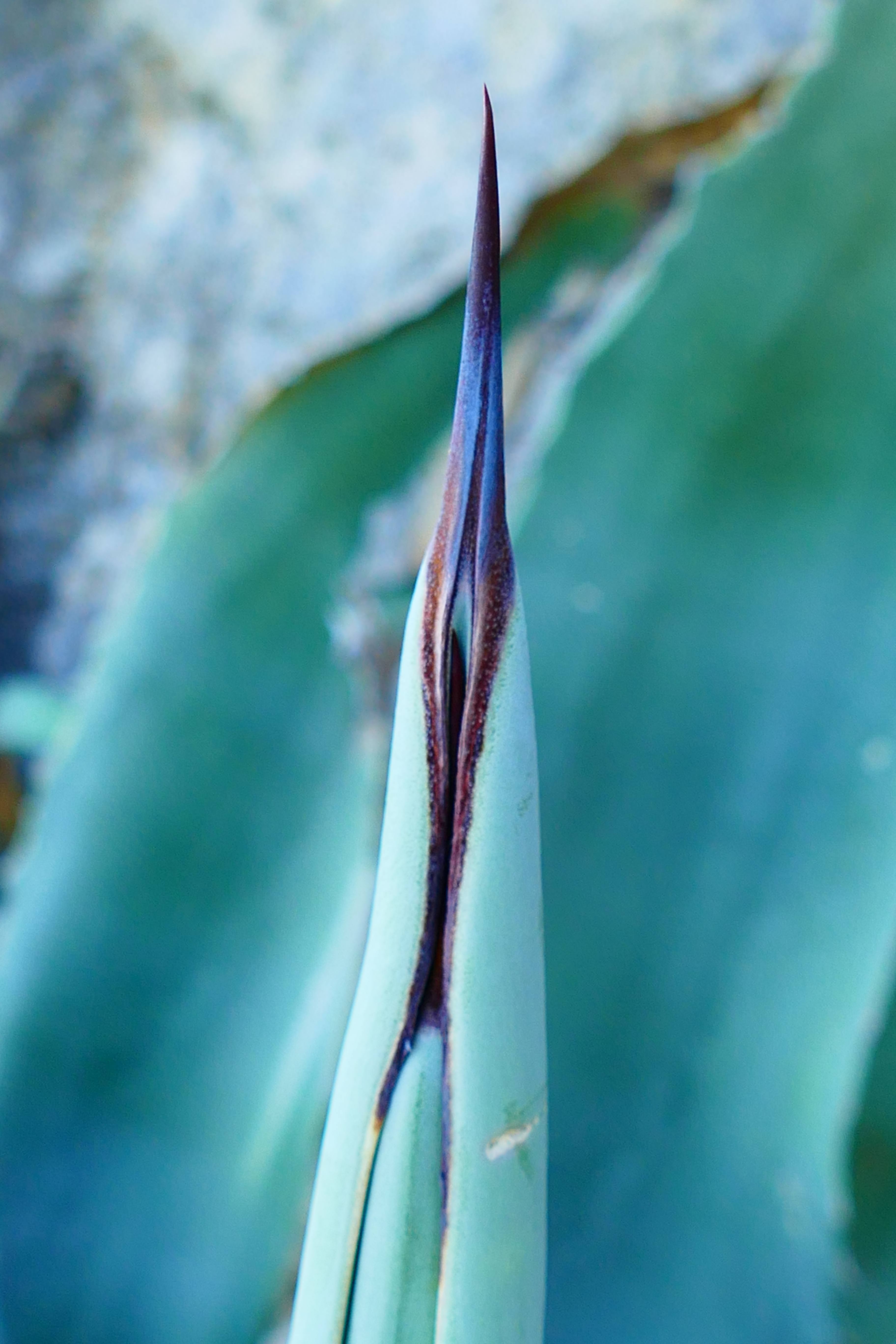 Agave americana
Agave americana
In a way, the special thing about the plants of Klis Fortress is that they are not so special at all – they are extremely characteristic. But, they are characteristic of two completely different climate regions.
On the south side of Klis Fortress, it is very warm and sunny – the Mediterranean climate. You can find species like Aleppo pine. On the northern side of Klis Fortress, it is colder – the sub-Mediterranean climate. Here, you can even get snow in winter and the most common species is Black pine. Two completely different climate regions in just a 50 metre stretch diagonally along the ground. That's what makes it extraordinary.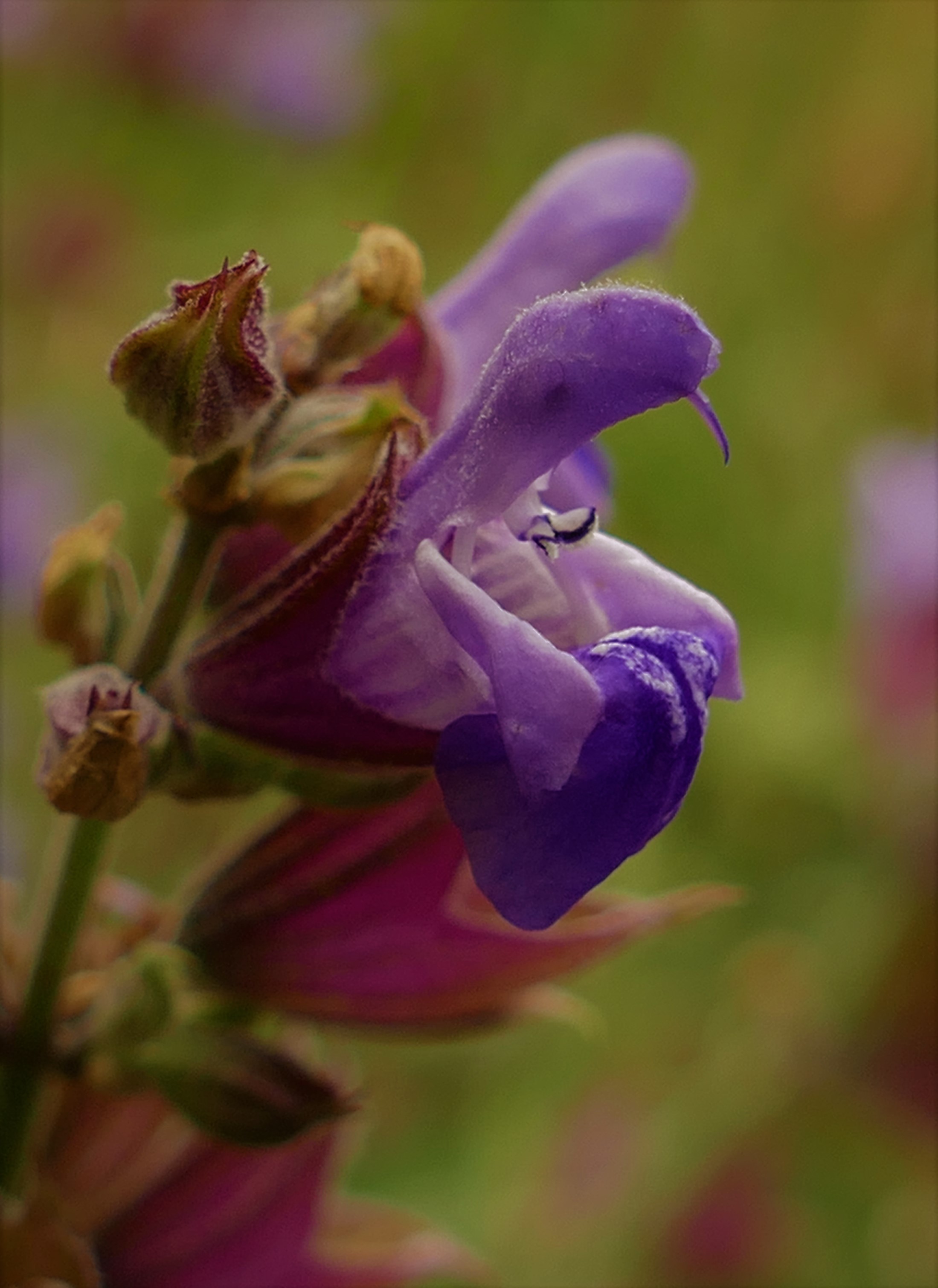 Salvia officinalis (sage)
Salvia officinalis (sage)
The plants of Klis Fortress include more than 300 species. We have around 100 of them listed in the book. Of those, 16 are species endemic to this area. Some of those are extremely rare - you can find them in very few places in Croatia - such as Fibigia triquetra. That plant is actually one of the reasons why this book exists. When I was a child, people used to tell me that some of the plants of Klis Fortress were very unusual and very rare. I used to walk around the fortress, looking at all the plants, trying to guess which ones were the unusual and rare species.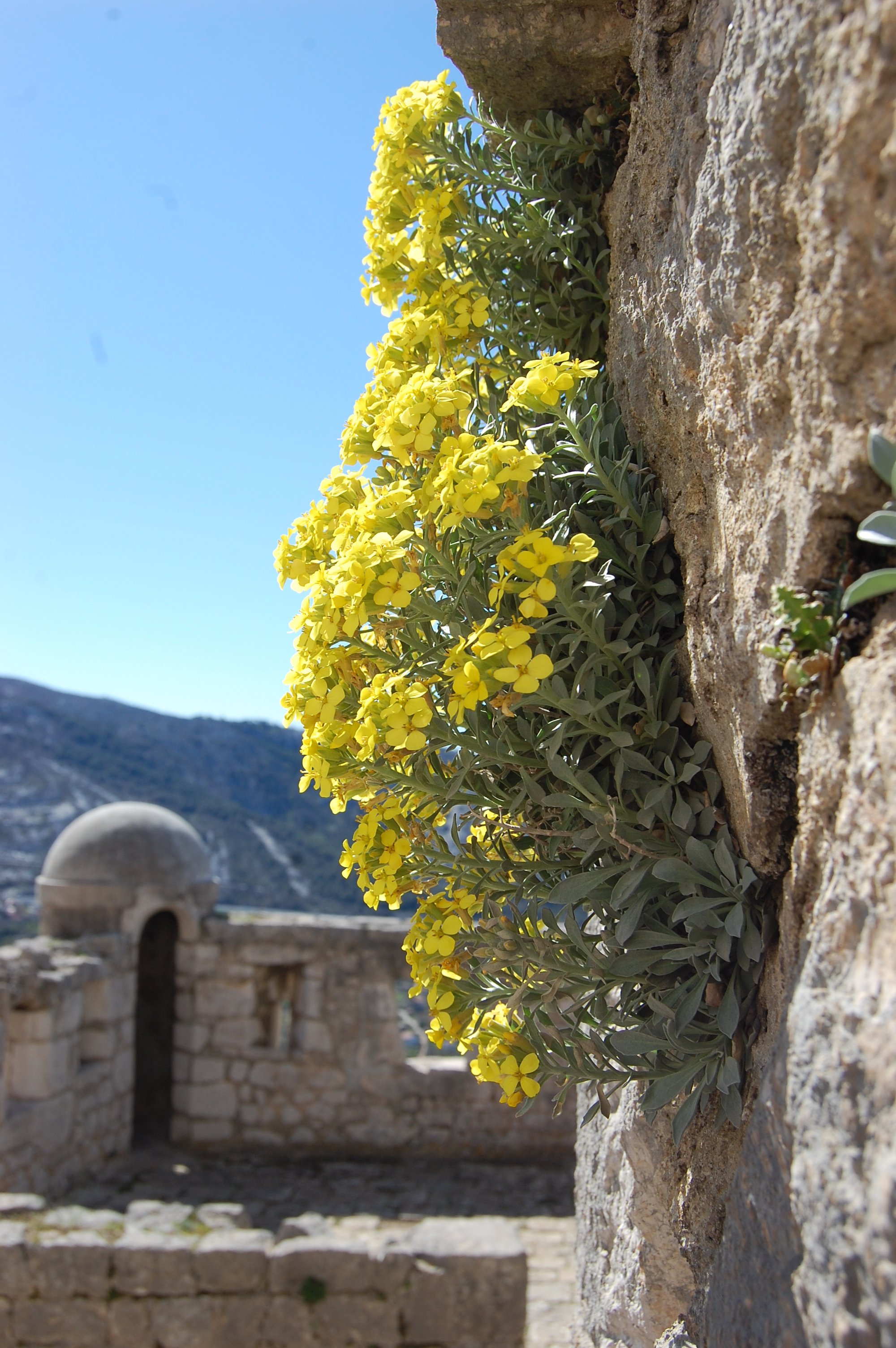 Fibigia triquetra
Fibigia triquetra
The man who first identified this as a unique, endemic species actually discovered his first specimen inside Klis Fortress. All of the studies and writings he made about the plant were done here. That plant is now the symbol of Klis Fortress.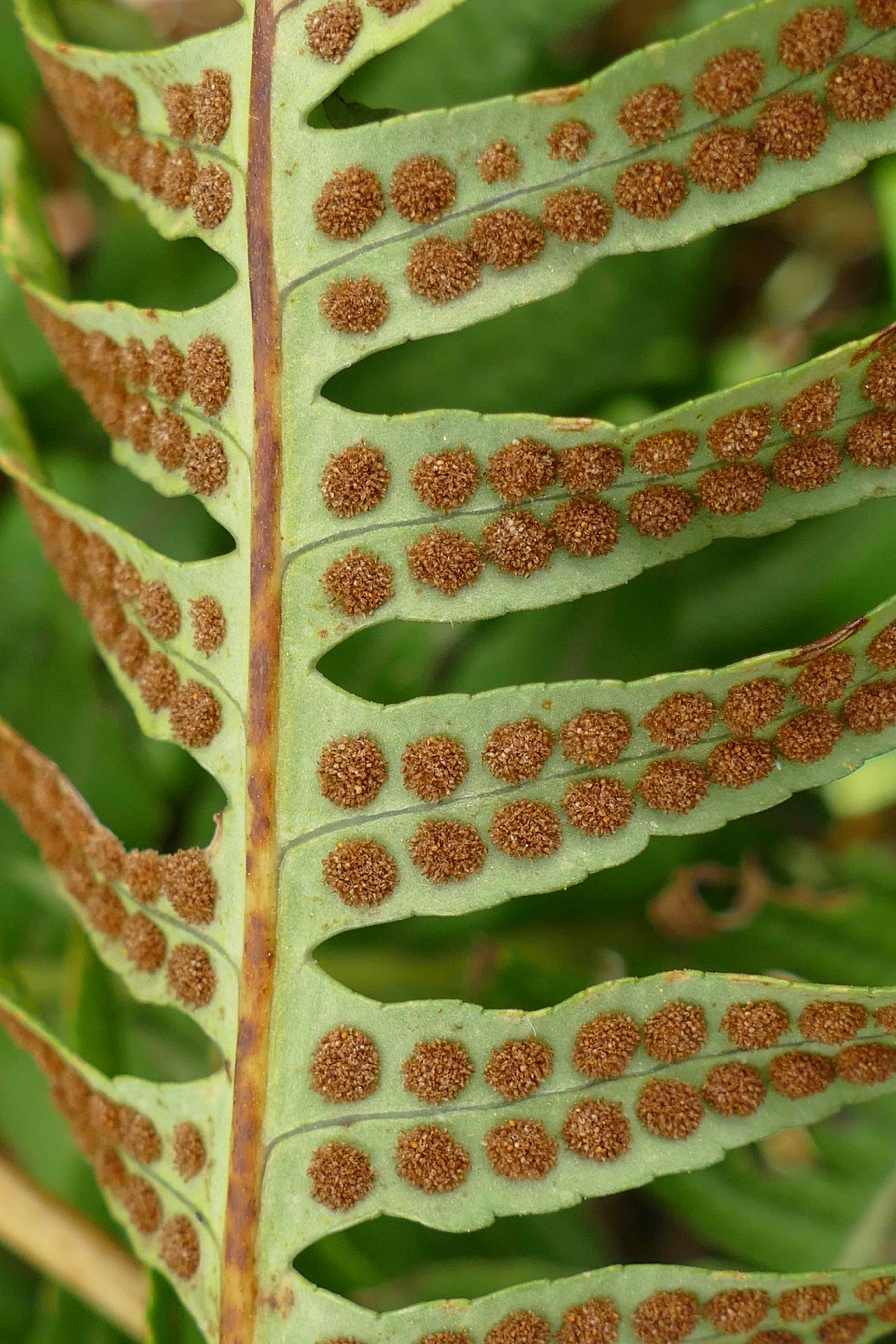 Polypodium cambricum
Polypodium cambricum
You can find our book in Klis library. Anyone can borrow it. It's also available at the entrance to Klis Fortress, where you buy the tickets. We wanted to give the opportunity to anyone who comes here to learn about the plants of this region – that's why we made such an effort to have the book in five languages. It was designed as a guide to the plant species of the whole Mediterranean mountain region in Croatia, so it's not just for the plants of Klis Fortress or the people who come to Klis Fortress itself.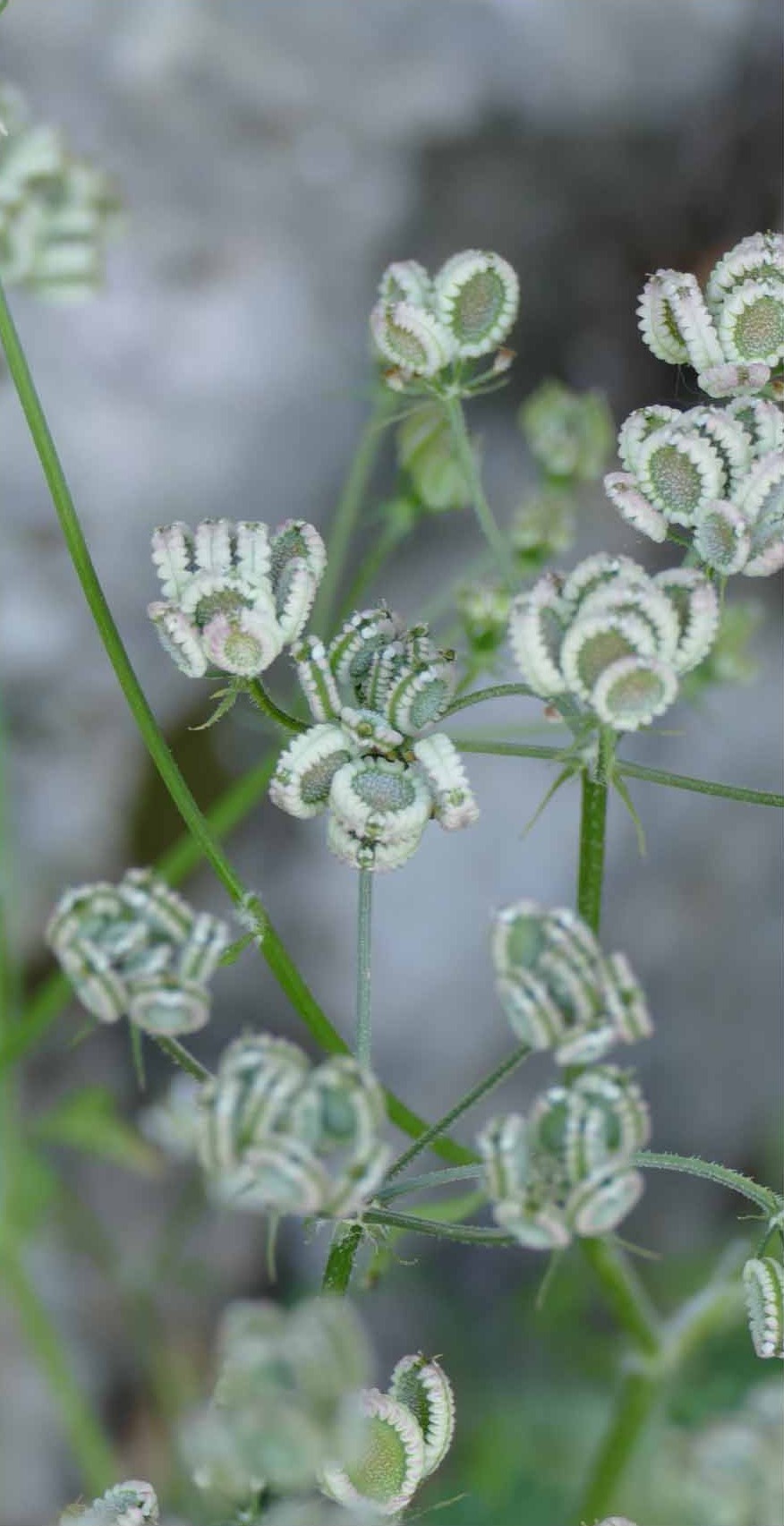 Tordylium
Tordylium
Most of the photography in the book was done by ourselves. It was important to take the photographs across four different seasons. That's one of the reasons it took almost two years to write this book.
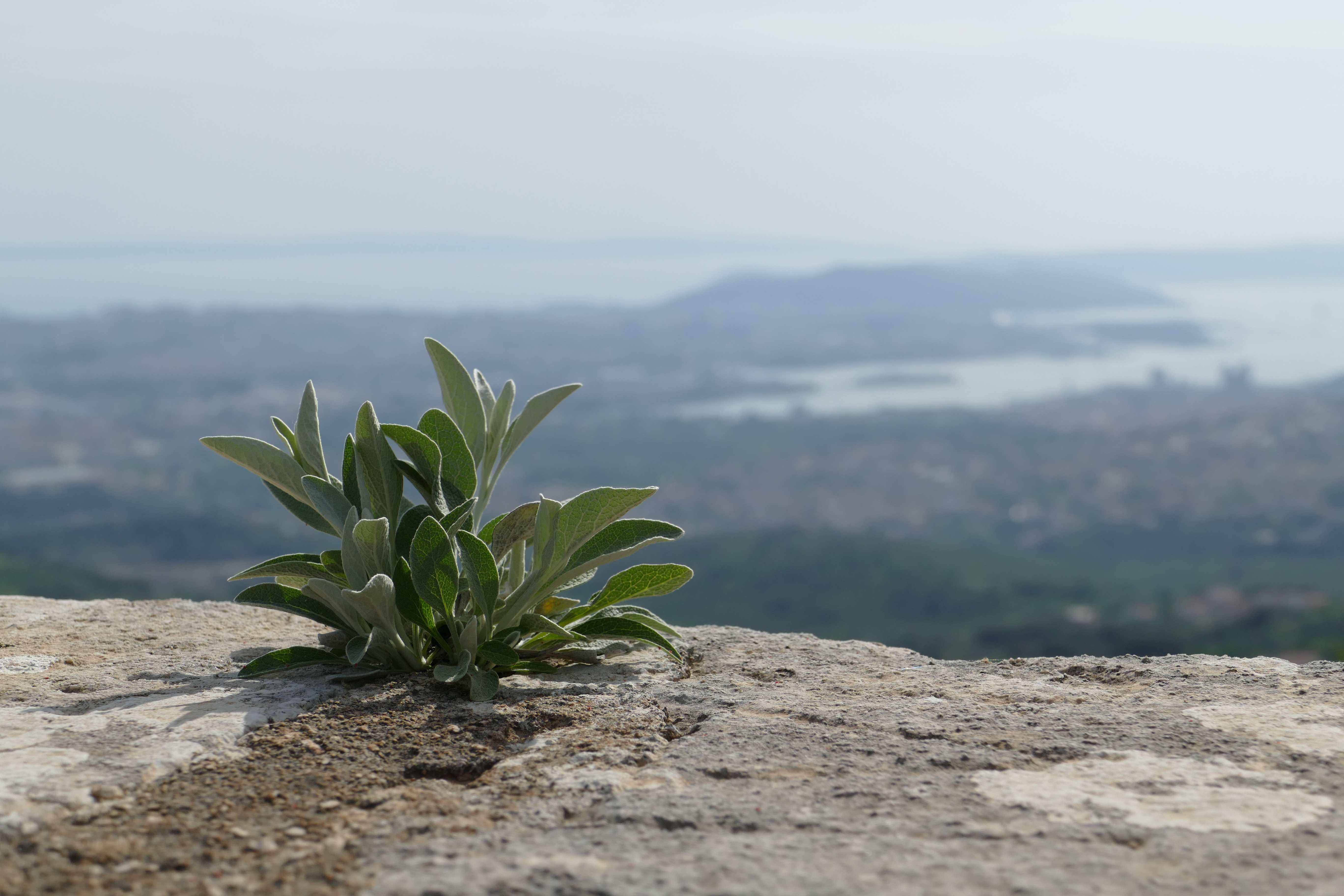 Inula Verbascifolia
Inula Verbascifolia
As we were making progress on the book, people in Klis began to find out what we were doing. It ended up becoming a project of the wider community. The mayor of Klis supported the project financially so that we were able to publish the book professionally and the library of Klis edited and published the book.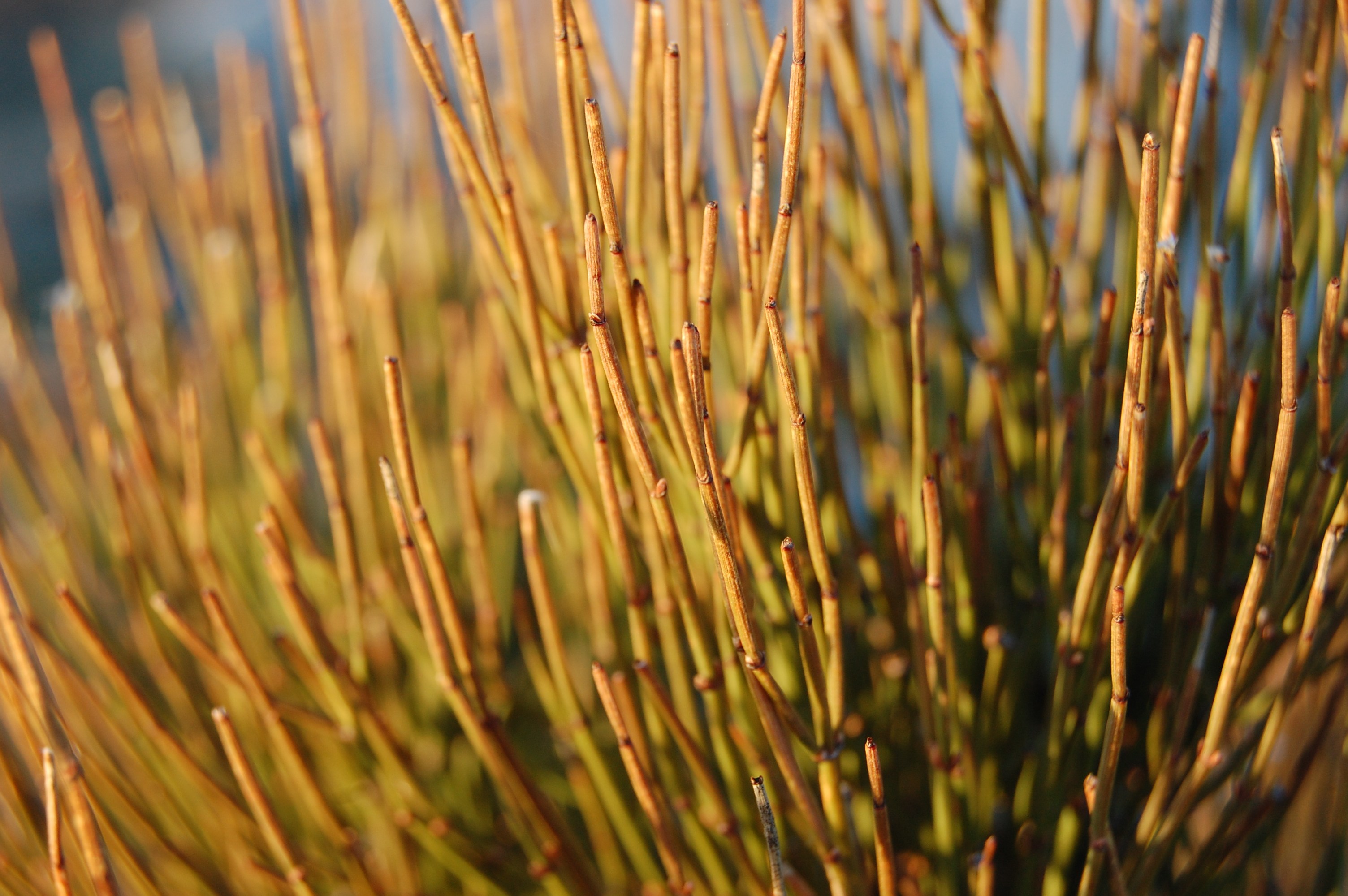 Ephedra major
Ephedra major
Others contributed to the design of the book and the translations, of course. Almost all of them donated their time and work to the project for free. It is quite difficult to translate some of this specific text correctly and we wanted to get it absolutely right. 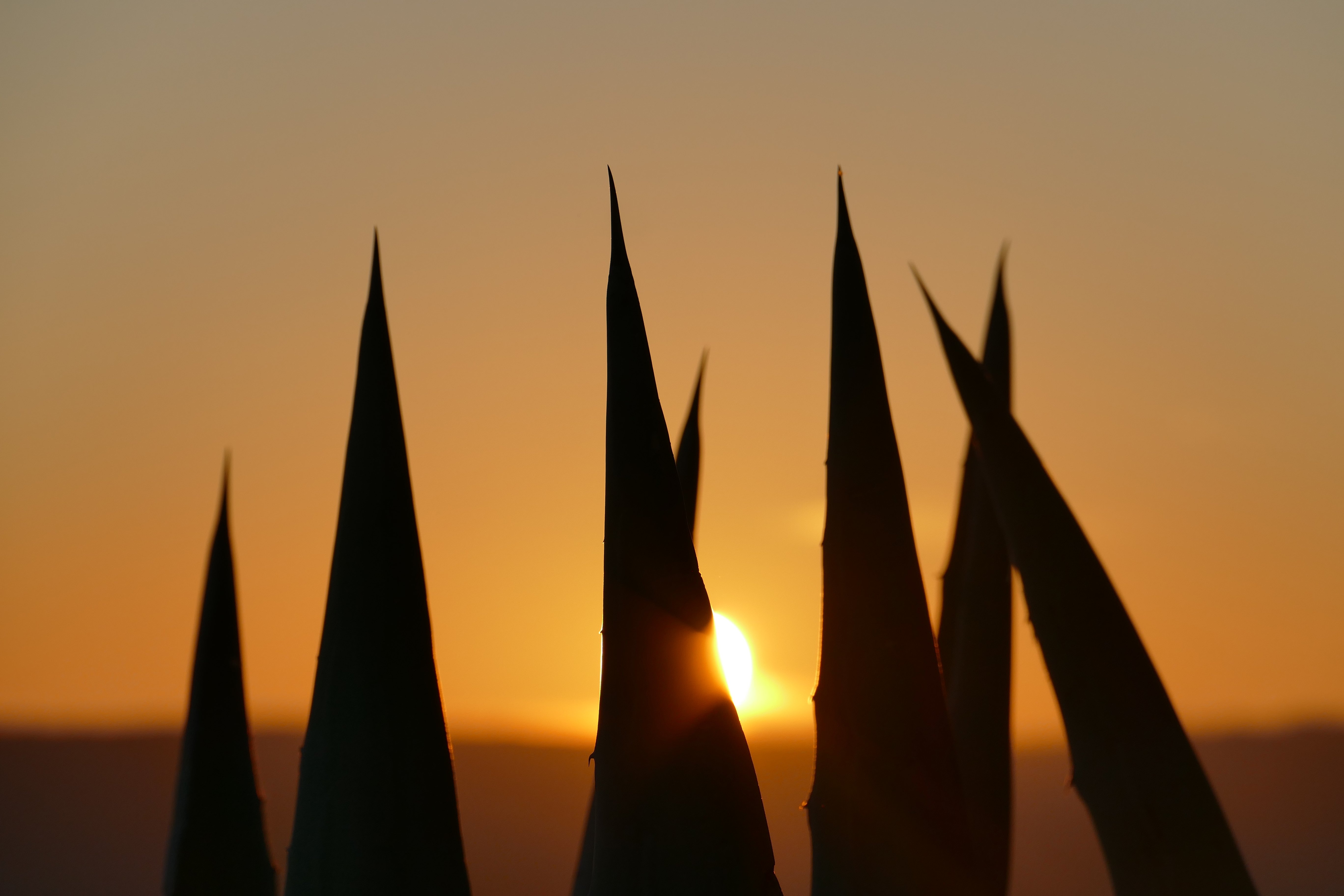 Agave americana
Agave americana
In the end, we ended up getting contributions from Italy and France, we had one colleague from the French embassy who helped and some of the best botanists we have in Croatia contributed to the book to make sure everything was absolutely correct. For that reason, the book was approved and recommended by the Botanical Society of Croatia and can be found in the Botanical library.
All images © Ivan Limić / The Plants of Klis Fortress
Dalmatian Hinterland Buzzes as 1600 Projects Worth 61 Billion Kuna Designed
As Poslovni Dnevnik writes on the 8th of November, 2020, in Caporice in the Dalmatian hinterland, 162 million kuna has been contracted for small family farms (OPGs) from European Union (EU) funds. An impressive 1,600 projects worth as much as 61 billion kuna were also designed in the often wrongly overlooked Dalmatian hinterland, HRT reports.
As much as 74 million kuna - of which two thirds have been provided from European Union funds - covers the worth of the Competence Centre in the Business and Service Centre of the Caporice Economic Zone located near Trilj. The centre would implement research and development programmes that should provide the local economy of the area with a much better position on the market.
To start with, work has begun on a line of fifteen innovative pharmaceutical, cosmetic and food products based on medicinal and aromatic herbs. In the Caporice plant, although the capacity is even higher, an average of 7,000 litres of milk are processed per day - but not just any old milk.
''For a good product, the most important thing is good raw material, naturally produced in the traditional way from local pastures. We make sure it doesn't come from large farms, because our product is specific. We're engaged in the production of hard cheese from three types of milk and in this process the natural ingredients come to the fore. It's best when they're from the domestic area,'' explained the advisor of Pudja Dairy's management, Darko Cobanov.
Cheese with lavender, basil and sage
The Dalmatian hinterland is an area rich in and diverse aromatic and medicinal herbs, which, the experienced producers are convinced, would go well with top-quality cheeses. They've won awards and noticed that cheeses that have additives - lavender, immortelle, scream, basil and sage - win in many categories. Although they've been used since ancient times, wild plants have not yet been utilised to their full potental, stated the acting director of the institution CEKOM 3LJ, Ivan Susnjara.
''We're just the little Dalmatian hinterland. We don't have large agricultural areas. If we want to be innovative in something, we must first use what we do have. Various studies have showcased the benefits and values of active substances in medicinal plants and now, through the Research Centre, it's going to be easy for us to apply it with enterprises,'' said Mate Pastar from the RERA S.D. public institution.
Innovation in cooperation with the faculty and the Rudjer Boskovic Institute
''The idea is that other partners prepare the medicinal herbs within the project in the form of essential oils or in dry form, and the analysis of their effectiveness will be conducted by renowned institutions across Croatia,'' added Darko Cobanov. This would involve the Rudjer Boskovic Institute and the Zagreb Faculty of Veterinary Medicine and Agriculture, all the way to the Institute for Adriatic Cultures and Karst Reclamation and the Faculty of Chemistry and Technology in Split.
''The Rudjer Boskovic Institute will deal with this part of the chemical characterisation of non-volatile compounds and at the same time on the evaluation of biological activities or potential, which means that we actually want to determine whether or not a medicinal plant actually does boast any antibacterial, antifungal, antioxidant capacity, immunostimulating, regenerative, or antiviral properties,'' explained Dr. sc. Rozelindra Coz-Rakovac from Zagreb's Rudjer Boskovic Institute.
''Since we have all the equipment for modern extraction techniques and analytical equipment, we're going to work on trying to come up with new compounds. We'll work very hard on the development of CO2 extracts. We in Osijek were the first to start doing it, but on a laboratory scale - we didn't try to transfer it to an industrial scale. Each plant contains bioactive substances, so we'll try to reach those that are important for the development of new products,'' announced the Vice Dean for Science of the Osijek Faculty of Food Technology, Prof. dr. sc. Stela Jokic.
Value-added products guarantee a better market position and, not only survival, but also further development and growth for the Dalmatian hinterland
''There is no life for entrepreneurship and new entrepreneurs without creating the proper conditions for that. There can be no demographic story without any new jobs. To give the opportunity to sixteen educated young people to have their bread and earn their salary here and to attract businessmen in a ring relationship, to create new jobs - this is the only thing that can preserve the Dalmatian hinterland and its people, and not only in the hinterland but across Croatia,'' emphasised the mayor of Trilj, Ivan Sipic.
''The interest of others speaks for itself as a driver of these projects. We have incubators and we receive inquiries from those interested on a daily basis. Everything you see around us makes no sense if there is no one to use it, if there is no product from it. Farmers must have space to create new value-added products,'' repeated Mate Pastar.
Thus, they contracted a massive 162 million kuna for small family farms from European Union funds alone, and the activities they're currently working on and implementing are worth three times more than that amount, while more than 1,600 projects worth as much as 61 billion kuna have been designed in and for the Dalmatian hinterland.
For the latest travel info, bookmark our main travel info article, which is updated daily.
Read the Croatian Travel Update in your language - now available in 24 languages
Water Supply, Wastewater System to Be Improved in Dalmatian Towns
ZAGREB, July 13, 2019 - The water supply and wastewater management system in the towns of Trilj, Otok and Dicmo in the Split hinterland will be reconstructed and improved by the implementation of a 248 million kuna project co-funded by the European Union, and to this end two agreements were signed in Trilj on Saturday.
Under this scheme, 133 million kuna will be set aside as non-repayable funds from the EU Operational Programme Competitiveness and Cohesion 2014 - 2020 .
The water network and sewerage pipes as well as wastewater treatment facilities in the Trilj-Otok-Dicmo agglomeration will be reconstructed and extended in compliance with the relevant EU directives.
Attending the ceremony, Prime Minister Andrej Plenković underscored the importance of the project for the Cetinska Krajina region.
He also cited figures on a rise in the number of contracts concluded by Croatia on EU-funded projects.
During the term of this government, contracts have been concluded for 70% of EU funds as against 9% at the start of the term, and that means 7.5 billion kuna, said the premier.
Of that amount, 2.6 billion has been absorbed, and this will also accelerate as now large-scale projects are in the pipeline, according to the premier's explanation.
All that brings about palpable effects for the quality of life of citizens, he added.
Trilj Mayor Ivan Šipić said that the project would help to revive the region and create hundreds of jobs.
More news about EU funds can be found in the Business section.
Dalmatian Hinterland: Tourism Ideas in Imotski Reach New Heights
As Braco Cosic/Novac writes on the 13th of June, 2019, Imotski locals are definitely entering the core of tourism with their hearts and souls. They've combined their traditional hospitality with a beautiful setting and well-equipped holiday homes, as well as a range of more excellent offers and adaptations for guests visiting this part of the Dalmatian hinterland.
Therefore, it should come as no surprise that the reviews made by international guests are so good for Imotski, nor is it odd that Imotski locals who rent out properties to tourists already have many, many weeks reserved.
Not even Istria can boast of what Imotski can at the moment. This twenty percent higher number of overnight stays achieved in the first five months of 2019 compared to the same period last year finally confirms that the Imotski region has become a recognisable tourist destination in this part of Croatia, Slobodna Dalmacija writes.
And now, the owners of about three hundred or so holiday homes in the Imotski area, most of them located in very quiet, more rural areas, are finding all possible ways of combining all they can in terms of tourism, surprising their international guests. They feel that within what Imotski already offers, which is peace and a quiet environment, beautiful scenery and landscapes, cycling and hiking trails, kids' playgrounds... there must be something else to add into the mix, too.
And that's exactly what's been being talked about for a long time now, and that's the offer of local Imotski cuisine. Collaboration with small family farms is one of the most serious and obvious options to take this idea to the next level in terms of tourism, but Imotski locals have found yet another solution.
A great example was found in Runovići. In September last year, Marijan Puljiz decided to join the respectable group of private renters in Imotski. Activating all of his hard-earned savings in decorating his new home, and this summer, he's begun to rent out his four star star "Đikano" to tourists for the first time. But he didn't just stop there, Marijan went a step further.
"I wanted to offer sport and recreation and healthy homemade food to guests, and all of that is within reach. Simply said, about thirty meters from the house is a sort of ''self-service''. The house has finely decorated rooms, fireplaces, and kitchens. There's no imported material. The stone and wood is from Imotski, and the environment around the house is full of greenery. The swimming pool is also lined with domestic material. There's a gym, and all of the most important content that you'd see on the Azur coast. The tennis court is Olympic sized, and its quality is such that the state championship could be held on it.
And what's special is what I offer them [guests] for free, without any charge. Around the house, they have a whole green ''self-service''. In the gardens I own, there are orchards, I give vineyards, homemade, clean food and fruit and vegetables without any artificial fertilisers or pesticides,''
This Imotski local who is taking his tourism game up a notch also has other gardens boasting peppers, cucumbers, beets, potatoes, carrots, salads, rocula, blitva, spinach and more. Not to mention grapes.
''Practically since mid-June to the end of October they have a self-service full of home grown products. The guests are free to take as much as they like, and thank God, the gardens are full,'' noted Marijan.
If a guest wants some homemade cheese, prosciutto, bread with homemade flour, or domestic chicken meat or some other meat in cooperation with my friends who are healthy food producers, I'm ready to bring them all of that,'' added Marijan.
"I want all of my offer to be domestic from Imotski, because we have that and we can do it,'' is Marijan's main message.
Follow our dedicated travel page for much more.
Can Dalmatian Hinterland Expect Significant Tourism Growth?
While having increased in popularity over the last couple of years owing primarily to active tourism, the Dalmatian hinterland tends to live in the shadow of its coastal cousin, but is all that about to change?
As Poslovni Dnevnik writes on the 3rd of December, 2018, the calculations of the Institute for Croatian Tourism show that the number of overnight stays in Split-Dalmatia County could rise by 30 percent, mostly in the Dalmatian hinterland, by more than 200 percent. The study in which these figures were presented was entitled "Measuring Sustainability of Tourism in Practice".
Tourism Institute researcher Zoran Klarić explained that Split-Dalmatia County tourism would be able to achieve a presumed growth of 30 percent, but only if certain obstacles are dealt with and removed before that goal, Slobodna Dalmacija reports.
"When it comes to the biggest development obstacles, we've come across an unacceptable situation with waste disposal, a power system on the edge of durability, a water supply system that depends on a single source in the case of Split, inadequate drainage, and very weak traffic power, plus parking spaces," said Klarić.
He explained that tourism in that particular county was explored through five parts: Split, the Split riviera, the Makarska riviera, the Dalmatian hinterland, Brač, Hvar, and Vis. In addition to the Dalmatian hinterland, which could account for 200 percent growth, the biggest potential for growth lies on the nearby island of Brač, where calculations show potential of up to 50 percent growth, Slobodna Dalmacija writes.
Through the additional number of guests who could come to Croatia over the coming years, the institute calculated that the potential increase of tourists could be as much as 250,000 per year. According to estimates, the largest number of overnight stays would be made by Makarska riviera (two million) followed by the Split riviera (one million and 950 thousand), while Split would see as many as 670,000 overnight stays realised.
In the coming years, the number of hospitality and tourist zones could increase, to 145 with a total of 95,000 beds on offer.
"It's almost twice the capacity available today in this type of accommodation," the institute noted, adding that there is currently no indication that the growth of tourism in private accommodation which otherwise currently accounts for about 80 percent of Split-Dalmatia County's overall accommodation capacity today will be limited.
Despite these indicators, which can be taken in both a positive and a negative way, tourism has some limitations in parts of the aforementioned county. The lack of labour is a big problem, and one which will continue to grow, and the Makarska riviera has a particular issue with its overall beach capacity.
Make sure to stay up to date with our dedicated travel and lifestyle pages for more. If you're interested solely in the Dalmatian hinterland, make sure to follow Total Inland Dalmatia.
Intangible Heritage of Croatia – Ćupter – Traditional Wine Jelly Candy
Learn how to make the candy of Croatia's past!
Minister of Culture in Zadar: Potential Revitalisation of Ravni Kotari?
Could a breath of fresh air be on the cards for Ravni Kotari?


